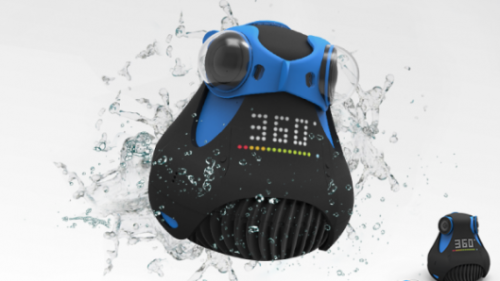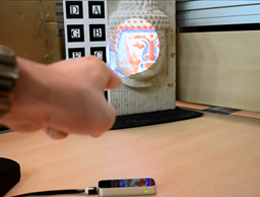The GoPro HERO4 is a new camera in the GoPro range, it consists of two separate models, the silver and the black.
Silver
The silver model includes a built-in touch-screen display, previously this had been available as an extra which connected to the back of the camera, the black model does not come with this.
It captures photographs with its 12MP camera at speeds up to 30fps and records video at 1080p60 and 720p120.
Black
Professional Video up to 4K30
It captures photographs with its 12MP camera at speeds up to 30fps and records video at 4K30, 2.7K50 and 1080p120.
Both models have built-In Wi-Fi + Bluetooth allowing connection and control from other devices using the GoPro App, Smart Remote2 and more.
With their rugged case they are waterproof to 40m.
The silver version of the camera is £289.99 while the back is £369.99.
Potential
The GoPro camera was designed with the extreme sports industry in mind, but it has since find a place in a number of other disciplines.
The size, weight and portability of the GoPro camera has meant that is had become the mainstay of the UAV (unmanned aerial vehicles) industry with the camera becoming standard on many quadcopters. The user can see what the camera sees by either using the on-board wi-fi and an app on tablet computers or phones; or a fpv (first person view) system which can be sent wirelessly to either a video monitor or video goggles. Motorised gimbals can be used to both, stablise the camera to remove any shake caused by the UAV, and to change the direction the camera is pointing in mid flight.
The GoPro also has great potential as wearable technology in the trench:
- The camera comes with a number of mounts out of the box, including ones that can attach to hardhats, but other mounts are available including a chest harness. These could be used to record the excavation process by attaching GoPro camera to the archaeologist excavating; the video could be used to record video but the individual video frames, or photographs, could be used to create a 3D photogrammetry model of the excavation. The combination of head and chest mounted camera may provide enough images to make an accurate model of the excavation. The rugged plastic housing can protect the camera from anything that it comes across in the trench.
- If a complicated or important excavation was being undertaken or an important artifact was being lifted the excavator could have a live conference with an expert who could advise them on the best way to excavate it.
- Experimentation with aspects of wearable technology has been undertaken on the Portus Project in Italy under the auspices of the University of Southampton.
The use of the GoPro is not limited to a single camera, the Dual HERO System is a case that allows two GoPro camera to be put side by side which allows 3D footage to be created using the GoPro Studio editing software.

The 360heros series of GoPro mounts clips a number of cameras together allowing spherical video recording with up to 14 GoPro cameras, the videos recorded can be stitched together in video stitching software to create immersive 360˚ videos. Mounts are available for everything from the top of helmets, to UAVs, underwater recording and even for recording 360˚ 3D with 14 GoPro cameras.
-

-

-

-

-
360Heros 360° GoPro mount
-

-

-

-

-

-

The system can record immersive videos on the ground, in the air and underwater which can viewed in a video player online – http://video.360heros.com/website/users/webplayer/videodetails.php?vid=59
The Freedom360 provides a similar system.
A GoPro has even been attached to a shovel while archaeology is being undertaken – https://www.youtube.com/watch?v=ht0RR94O9jY&feature=youtu.be
It has been used in underwater test of sfm (structure from motion) – http://arc-team-open-research.blogspot.co.uk/2013/03/extreme-sfm-underwater-archaeology.html
Limitations
The HERO4 Black provides the user with a highly portable camera capable of recording 4K video, it does however come at a high price which limits the potential of using multiple cameras in an immersive recording system, the cheaper HERO does provide this opportunity however.































































